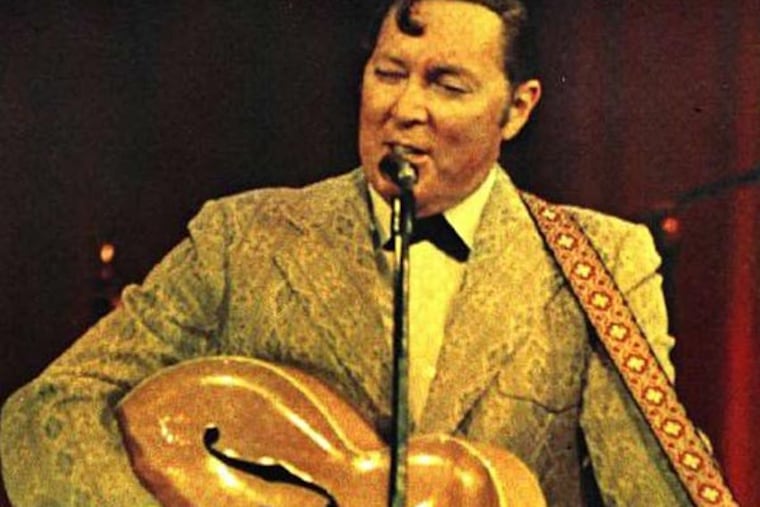A history of pop that crackles
In 1954, Bill Haley shook, rattled, and rolled. In 2003, Beyoncé went crazy in love. That's two pop stars, among the biggest of their time, using similar language (and similar grooves) to describe more or less the same thing.

Yeah! Yeah! Yeah!
The Story of Pop Music
From Bill Haley to Beyoncé
By Bob Stanley
W.W. Norton. 599 pp. $29.95
nolead ends nolead begins
Reviewed by Mikael Wood
In 1954, Bill Haley shook, rattled, and rolled. In 2003, Beyoncé went crazy in love. That's two pop stars, among the biggest of their time, using similar language (and similar grooves) to describe more or less the same thing.
But think of all that happened over the half-century that separates them: Elvis Presley, rockabilly, "Why Do Fools Fall in Love," girl groups, the Beatles, the Rolling Stones, "Like a Rolling Stone," Motown, the Beach Boys, the singer-songwriter, punk, disco, heavy metal, "Hotel California," new wave, New Order, and new jack swing. And Madonna! And country music! And "We Are the World"!
This absurdly, deliriously vast landscape is what Bob Stanley sets out to map in his sweeping but finely detailed new book, Yeah! Yeah! Yeah! The Story of Pop Music From Bill Haley to Beyoncé. And though one of his central points is that credentials rarely matter in pop - which, by the way, he defines usefully as music made for "an audience that the artist doesn't know personally" - Stanley's background ensures that he comes to the job adequately equipped.
Familiar to record nerds from his role in the curatorial British trio Saint Etienne, he also worked as a writer for NME and Melody Maker during those U.K. music papers' late-'80s glory days. So he's a studio rat capable of explaining the mechanics of dub reggae as well as a critic unafraid - overjoyed, really - to declare that the Stones "were indirectly responsible for some of the worst aspects of modern pop." Passion, skepticism and technical know-how - these are the engines of Stanley's work.
Structured chronologically, Yeah! Yeah! Yeah! moves crisply but methodically through history as the author takes up each successive scene or sound or movement and tries to understand its place in the larger story.
Think of the book as an encyclopedia in narrative form, one shaped by the author's subjective, sometimes contrarian taste. (His favorite Bob Dylan record: "New Morning.")
Stanley is best when he steps outside the march of progress and considers the whys and wherefores silently embedded in the music. Writing about the British Invasion, he wonders if the sudden influx of U.K. acts can be attributed to America's having "lost faith in itself" after the assassination of John F. Kennedy. And he decides that, despite its commercial success, Motown was dismissed by many critics at the time because the label wasn't "firming up the values of its own local community."
A creative who's also worked on the other side of the business as a label owner, Stanley digs into the rise of music's ancillary industries, such as the pop press ("consumers wanted . . . to feel closer to their idols," he writes) and music-based television programming such as the BBC's hugely influential Top of the Pops, which aired from 1964 to 2006.
Like many lifelong record collectors (and nearly all professional musicians), Stanley seems troubled by the digital era's decontextualizing free-for-all. "Without the detail, pop music doesn't have the desirability it once had; it's not as wantable," he writes.
Yet you never get the impression that he's stopped listening. As clear-eyed about music as he is crazy in love with it, he's easy to picture scrolling through the iTunes Store, clicking on the No. 1s along with the obscurities, taking notes perhaps for a second volume: The Story of Pop Music From Beyoncé to . . . well, who knows?